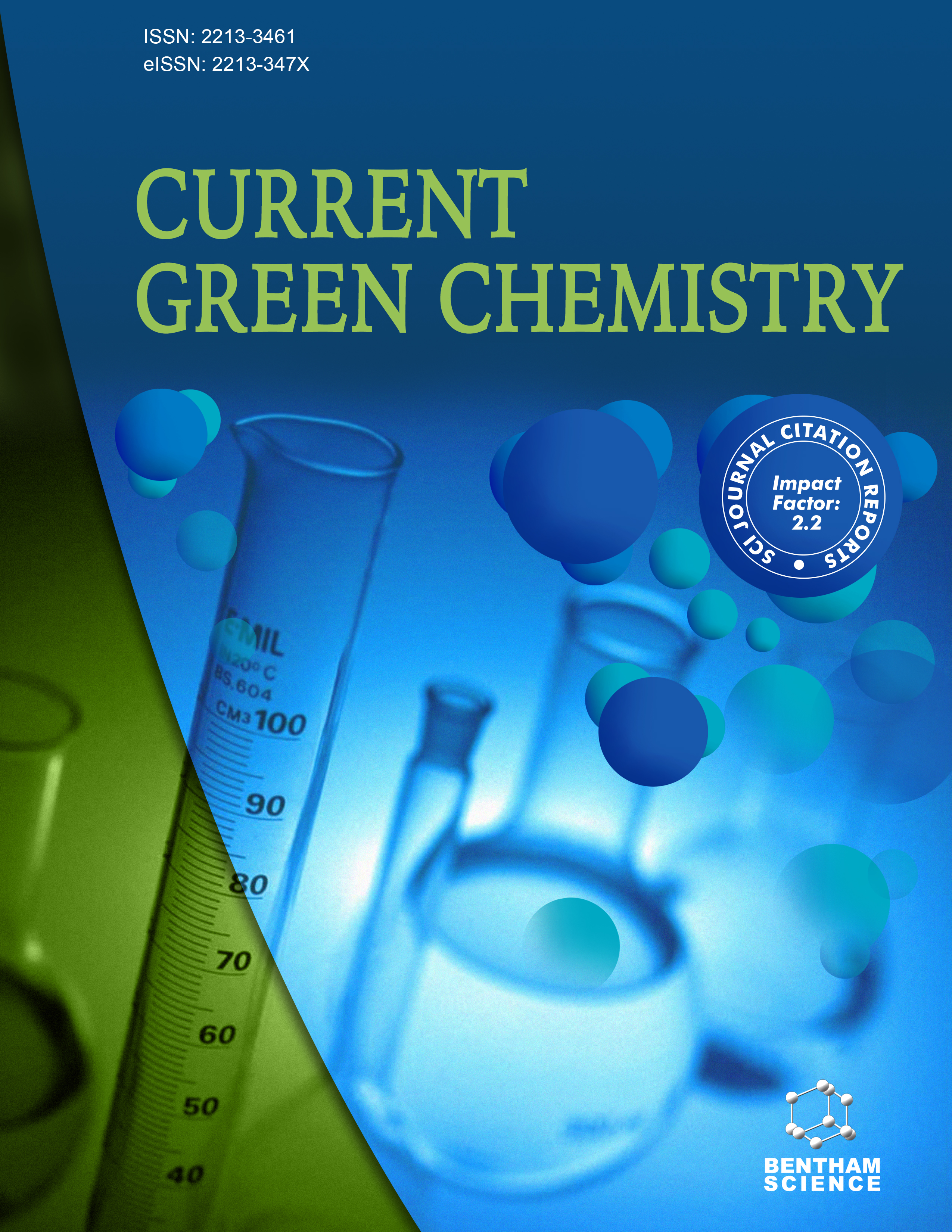- Home
- A-Z Publications
- Current Green Chemistry
- Previous Issues
- Volume 11, Issue 1, 2024
Current Green Chemistry - Volume 11, Issue 1, 2024
Volume 11, Issue 1, 2024
-
-
Biochar, Clay, Zeolites, and Microorganism-based Methods for Remediation of Heavy Metals
More LessAuthors: Yukti Monga, Shivangi Sharma, Shivendra Singh and Ashu GuptaThe modern world of chemistry needs to find a sustainable solution for the remediation of heavy metals. The method of solving heavy metal problems using abundant and easily available ways is an integral part of green chemistry. This approach stimulates innovation among scientists. These procedures increase performance and decrease the consumption of non-renewable resources, minimizing negative impacts on t Read More
-
-
-
Unlocking the Potential: A Comprehensive Review for the Synthesis of Benzofuran Derivatives
More LessBenzofuran, a versatile heterocyclic compound, has gained considerable attention in recent years due to its diverse biological activities, distinctive structural characteristics, broad synthetic approaches, and extensive applications. The growing potential inherent in benzofuran encourages many researchers to address the challenges of the synthesis of its framework. This comprehensive review aims to provide a detailed overview Read More
-
-
-
Green and Eco-friendly Synthetic Strategies for Quinoxaline Derivatives
More LessAuthors: Irfan Ali and Rohit BhatiaAdvancement in green synthetic methodologies has brought a revolution in heterocyclic synthesis. Green synthesis has bypassed the classical procedures involving toxic/hazardous solvents or catalysts and improved the current environmental safety standards by many folds. Green chemistry research has continuously made significant contributions to the development of heterocyclic scaffolds both at laboratory and Read More
-
-
-
Pharmaceuticals in the Water: Emerging Concerns and Innovative Remediation Solutions
More LessAuthors: Smriti Ojha, Shivendra M. Tripathi, Pratik Kumar Vishwakarma and Sudhanshu MishraPharmaceutical contamination, resulting from the discharge of active pharmaceutical ingredients (APIs) and other related compounds into the water, has become a growing concern due to its potential adverse effects on ecosystems and human health. This review article aims to examine the many facets of pharmaceutical contamination and highlight the most recent developments in its remediation. The effects of pharma Read More
-
-
-
Going Green for Blue - An Indigo Approach
More LessAuthors: Srivani Thadepalli and Sundarvel AmsamaniIntroduction: Dominating use of chemical processes for reducing indigo at several small-scale production houses formed the ground for initiating this study. Conventional textile processing hubs still use sodium hydrosulphite as a reducing agent irrespective of the source of indigo, whether natural or synthetic ignoring the unfavourable consequences of their disposal and elimination from effluent.Methods: The paper address Read More
-
-
-
Water-Mediated Synthesis, Antibacterial and Antioxidant Evaluation of New Fused Pyrimido-pyrimidine and Pyrimido-purines Derived From Nucleobases
More LessAuthors: Ichrak Bouguessa, Mohamed Aber, Nawal Khier, Mohamed Dehamchia, Samir Bayou and Zine RaIntroduction: A simple and eco-friendly synthesis of novel substituted pyrimido[1,6- a]pyrimidine, pyrimido[1,2-g]purine, and pyrimido[2,1-e]purine was accomplished by refluxing of nucleobases (cytosine, adenine or guanine) and dibenzalacetone (DBA) in water using NaOH as a catalyst.Methods: The molecular structures of the resulting products were characterized by infrared spectroscopy (FT-IR), mass spectro Read More
-
Most Read This Month
Article
content/journals/cgc
Journal
10
5
false
en


